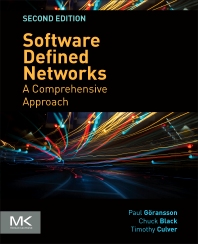Books in Physical sciences and engineering
Books in Physical sciences and engineering
- 1st Edition
- October 21, 2016
- Osvaldo de Oliveira Jr + 3 more
- English
- Hardback9 7 8 0 3 2 3 4 9 7 8 2 4
- eBook9 7 8 0 3 2 3 4 9 7 8 3 1

Nanostructures
- 1st Edition
- October 20, 2016
- A. H. Beck
- English
- Paperback9 7 8 0 0 8 0 1 0 8 8 8 9
- eBook9 7 8 1 4 8 3 1 3 8 4 9 7

Physical Electronics
- 2nd Edition
- October 20, 2016
- Paul Goransson + 2 more
- English
- Paperback9 7 8 0 1 2 8 0 4 5 5 5 8
- eBook9 7 8 0 1 2 8 0 4 5 7 9 4

Software Defined Networks
- 1st Edition
- October 20, 2016
- Anshu Mathur
- English
- Hardback9 7 8 0 3 2 3 3 9 0 8 0 4
- eBook9 7 8 0 3 2 3 3 9 0 8 1 1

Nanotechnology in Cancer
- 1st Edition
- Volume 49
- October 20, 2016
- English
- Hardback9 7 8 0 1 2 8 0 4 7 7 9 8
- eBook9 7 8 0 1 2 8 0 5 1 7 4 0

Advances in Applied Mechanics
- 1st Edition
- October 19, 2016
- I. M. Tsidilkovski
- Brian Pamplin
- English
- eBook9 7 8 1 4 8 3 1 5 7 8 6 3

Band Structure of Semiconductors
- 1st Edition
- October 19, 2016
- Bengt Sundén + 1 more
- English
- Paperback9 7 8 0 1 2 8 0 9 7 6 0 1
- eBook9 7 8 0 1 2 8 0 9 7 6 1 8

Heat Transfer in Aerospace Applications
- 1st Edition
- October 19, 2016
- Bill Collum
- English
- Hardback9 7 8 0 0 8 1 0 1 9 3 8 2
- eBook9 7 8 0 0 8 1 0 1 9 3 9 9

Nuclear Facilities
- 1st Edition
- October 19, 2016
- Jean-Paul Duroudier
- English
- Hardback9 7 8 1 7 8 5 4 8 1 8 8 8
- eBook9 7 8 0 0 8 1 0 1 7 8 0 7

Heat Transfer in the Chemical, Food and Pharmaceutical Industries
- 1st Edition
- October 19, 2016
- Henri Arzeliès
- English
- Paperback9 7 8 1 4 8 3 1 1 9 8 4 7
- eBook9 7 8 1 4 8 3 1 5 2 2 6 4

Relativistic Point Dynamics